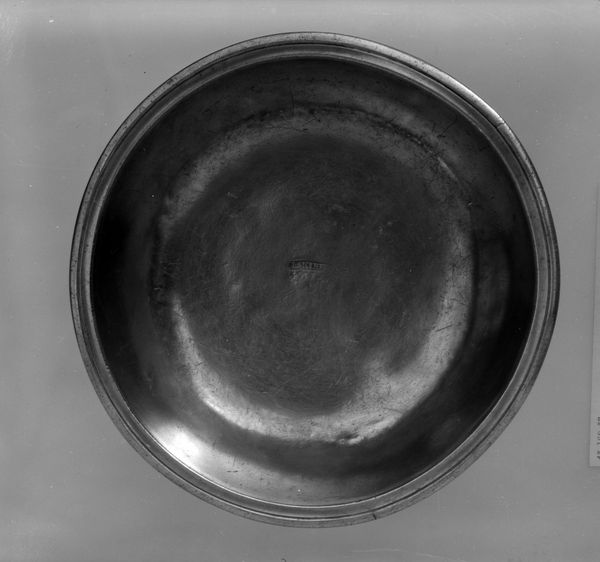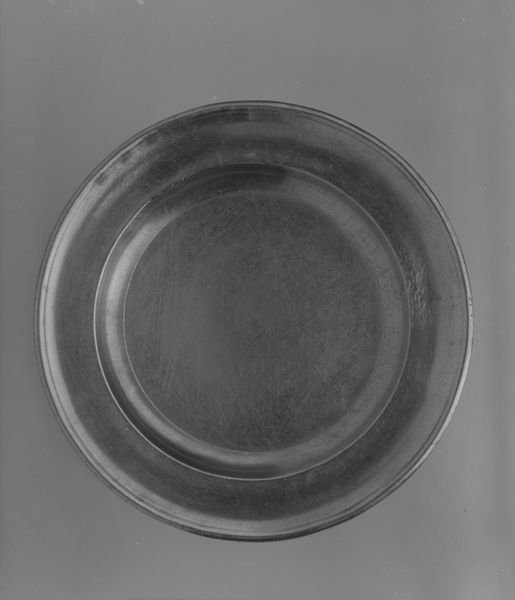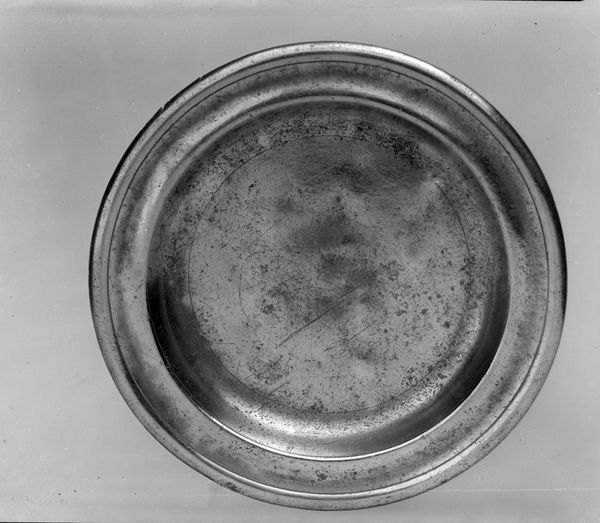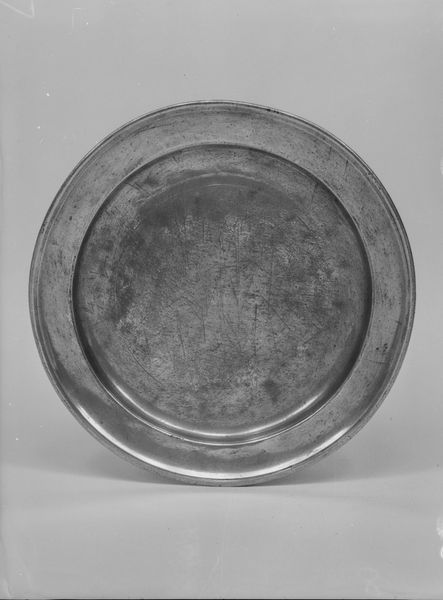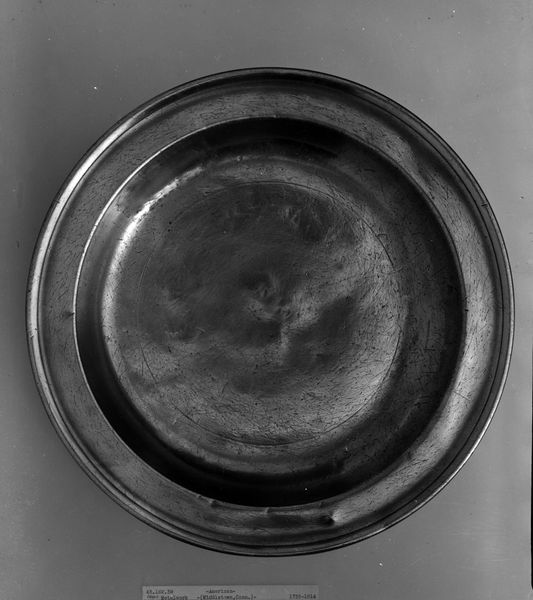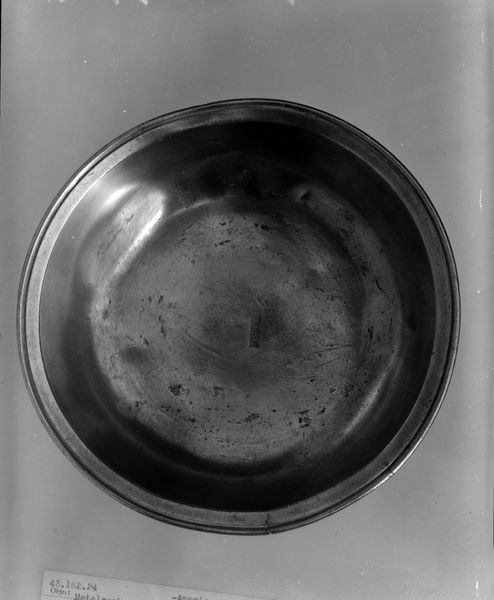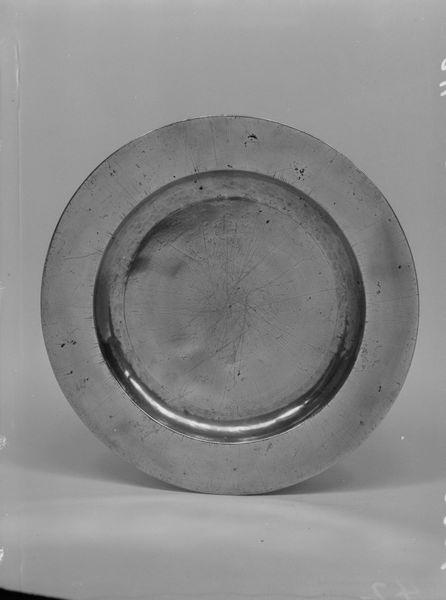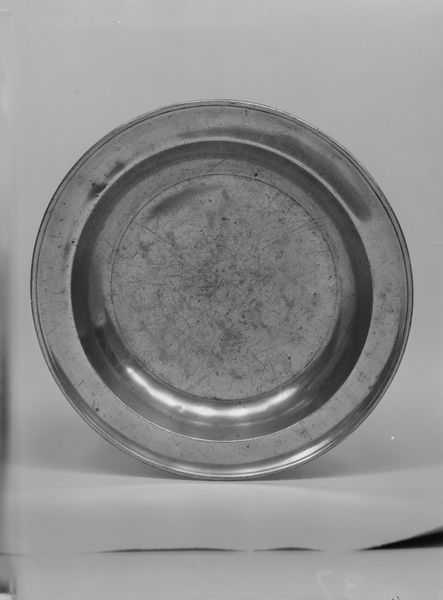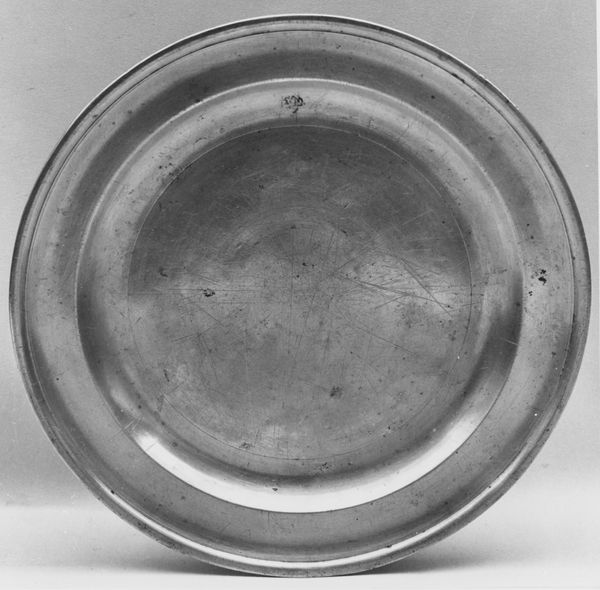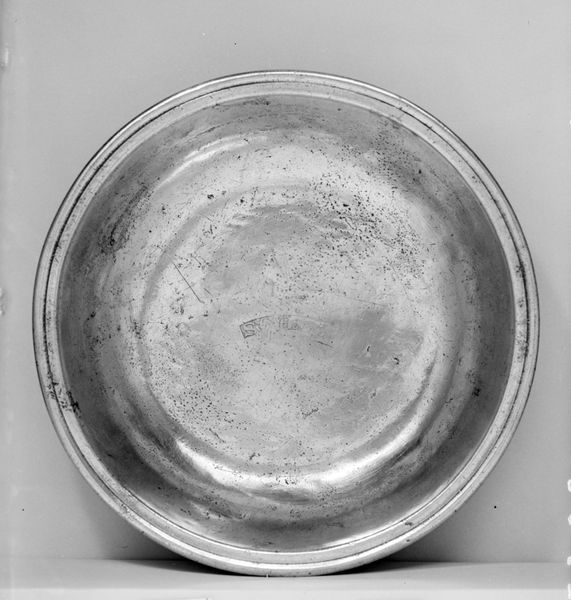
metal
#
metal
#
decorative-art
Dimensions: H. 7/8 in. (2.2 cm); Diam. 13 1/2 in. (34.3 cm)
Copyright: Public Domain
Curator: Here we have a metal dish crafted by Richard Austin, sometime between 1793 and 1807. It resides here at the Metropolitan Museum. Editor: Well, it immediately evokes a feeling of worn utility, doesn’t it? The metal appears aged and the imperfections give it character. You can almost feel the weight of history it holds. Curator: Indeed. The dish’s circular form is its defining characteristic; it’s almost archetypal. Note how the central depression focuses the eye inward, then rises to the brim of the plate, creating a dialogue between the center and periphery. Editor: It strikes me as a powerful, almost humbling symbol of domesticity. Consider how many hands this dish has passed through, the countless meals it has served. There's a real sense of connection to the everyday lives of people from the late 18th and early 19th centuries. A vessel of nourishment becomes nourishment for the soul in retrospect. Curator: An intriguing thought. But from a formalist perspective, the beauty resides in the object itself: the way the light interacts with the surface, the subtle shifts in tone and texture, creating a visual poem in the language of form. The utilitarian origin doesn't determine the meaning but contributes. Editor: Agreed. And yet, those very textures and imperfections are the narrative, the evidence of a lived history inscribed directly onto the object itself. Each scratch, each dent tells a story. I wonder about the specific cultural rituals this dish may have been party to: holidays, mourning ceremonies, maybe the silent hope for the next day’s prosperity. Curator: Interesting point. We are both imposing subjective realities onto the thing itself. Though Austin could not control who bought it, the cultural milieu adds to the reading now. Editor: Indeed. For me, the “Dish” speaks of shared humanity across generations and time periods, of course, enhanced by its presentation and accessibility. Curator: Well, I can say I look at it anew, noticing now an integration with social existence through careful manipulation of a mundane surface. Thank you.
Comments
No comments
Be the first to comment and join the conversation on the ultimate creative platform.
